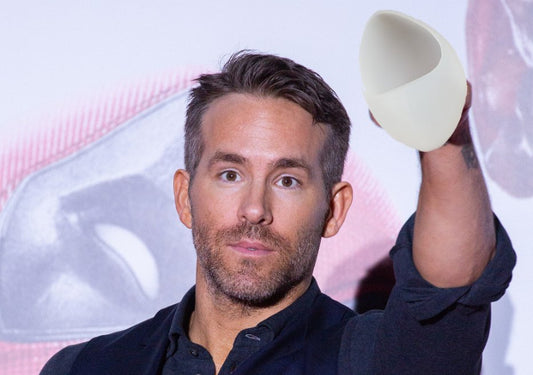Breast milk leakage and what to do about it
Some breastfeeding parents (but not everyone) leak breast milk while breastfeeding baby on the other side. Usually, breast milk leakage happens in the early weeks and months of breastfeeding and goes away at some point. In recent years, various products have become available to 'deal with' leaking milk, also called drip milk.
Products that are worn inside the bra
First, there are breast pads that simply soak up the leakage to prevent it from getting on your clothes. Breast pads are worn inside the bra. There are washable and disposable breast pads.
Then, there are 'milk savers' or 'breast shells' that are also designed to be worn inside the bra, like a breast pad. Except, they don't soak up the milk, they save it in a reservoir so that it can be put away for later. Saving leaking milk 'passively' is a brilliant concept: it transforms leaking milk from a nuisance to a valuable resource and costs no extra time!
The problem with wearing a breast pad or milk saver in your bra for an extended period of time is that they create an wet, warm, sugary environment that is deprived from fresh air. Ideal for bacterial proliferation. Yeast infection is a common bacterial infection affects breastfeeding moms and their babies. It can cause pain with breastfeeding and is really annoying to get rid of.
In addition, milk savers need to be used with care since they can dump all the milk if you bend over the wrong way.
Haakaa milk catchers and similar products
Most recently, we've seen 'silicone breast pumps' like the Haakaa milk catcher or Haakaa knock-offs, which are not worn inside the bra. They are only used while breastfeeding, which is usually when most of the leaking happens. They suction to the breast while baby is feeding on the other side.
The Haakaa-style silicone milk collector is popular among breastfeeding moms but many lactation professionals have mixed feelings about it...
The nice thing about it is that it's simple: no assembly required, no power, batteries etc. It is also surprisingly prolific! Some people get more milk with their Haakaa milk catcher than with their expensive electric breast pump. That's because the Haakaa milk catcher takes advantage of the natural let-down reflex. Also, the suction on the nipple is strong enough to draw out more than the milk that would naturally leak from the breast.
More milk sounds great but here is where lactation professionals worry:
- Removing extra milk during a feed can compromise the amount of milk available for baby when you switch breasts. If too much extra milk is removed during every feed, it can slow down growth and/or cause oversupply.
- Milk that is drawn out passively has a low fat content. Many milk banks won't even accept it as donations. This means that baby might not get enough fat when this milk is fed to baby. It also means that fat may be left behind in the breast, which increases the risk of clogged ducts and mastitis.
- Haakaa-style silicone milk catchers connect to the breast with a flange, similar to regular breast pumps. This design strains the sensitive nipple/ areola area and can cause discomfort, especially if the fit isn't right.
kindestCup vs. Haakaa milk catcher
kindestCup is somewhat similar to a silicone breast pumps but with some important differences.
kindestCup looks nothing like a conventional breast pump. The flange-less design and wide opening allow it to suction to a wide area of breast tissue. Why does Haakaa hurt some people? Because all the suction is focused on the sensitive nipple/ areola area. Distributing suction over a wider area has two big advantages:
- The latch is feels gentle and is more secure. Unlike Haakaa-style milk catchers, kindestCup can be used in any breastfeeding position. Check out this spectacular demo of the kindestCup latch.
- When suction is spread out over a wide area of breast tissue, less milk is drawn from the nipple. kindestCup captures the milk would have leaked naturally and not much more. This means that baby gets a full meal once you switch breasts. The idea here is to feed the baby, not the freezer and maintain a healthy milk supply that matches your baby's needs.
And of course, kindestCup is unique because it can also be used for hand expression. That means that you can use it to collect milk when you're away from baby. Finally, you can also use kindestCup to cup feed baby.
Note that low fat-content remains a concern with passively collected milk, even with kindestCup. We always recommend to boost the fat content of leaking milk by mixing in some hand expressed milk before storing it.




